The SS Arthur Wright – a Shoreham Collier
The SS Arthur Wright was built by William Pickersgill & Sons at their Southwick, Sunderland yard in 1937 for the Brighton Corporation. It was a 1,097-ton vessel, the Corporation’s first collier, and used for conveying fuel to the electricity works at Portslade. Named after the first (1894) manager and engineer of the works (he also designed the first domestic supply meter) the Arthur Wright carried coal mainly from the Yorkshire and Welsh coalfields via the ports of Goole and Port Talbot.
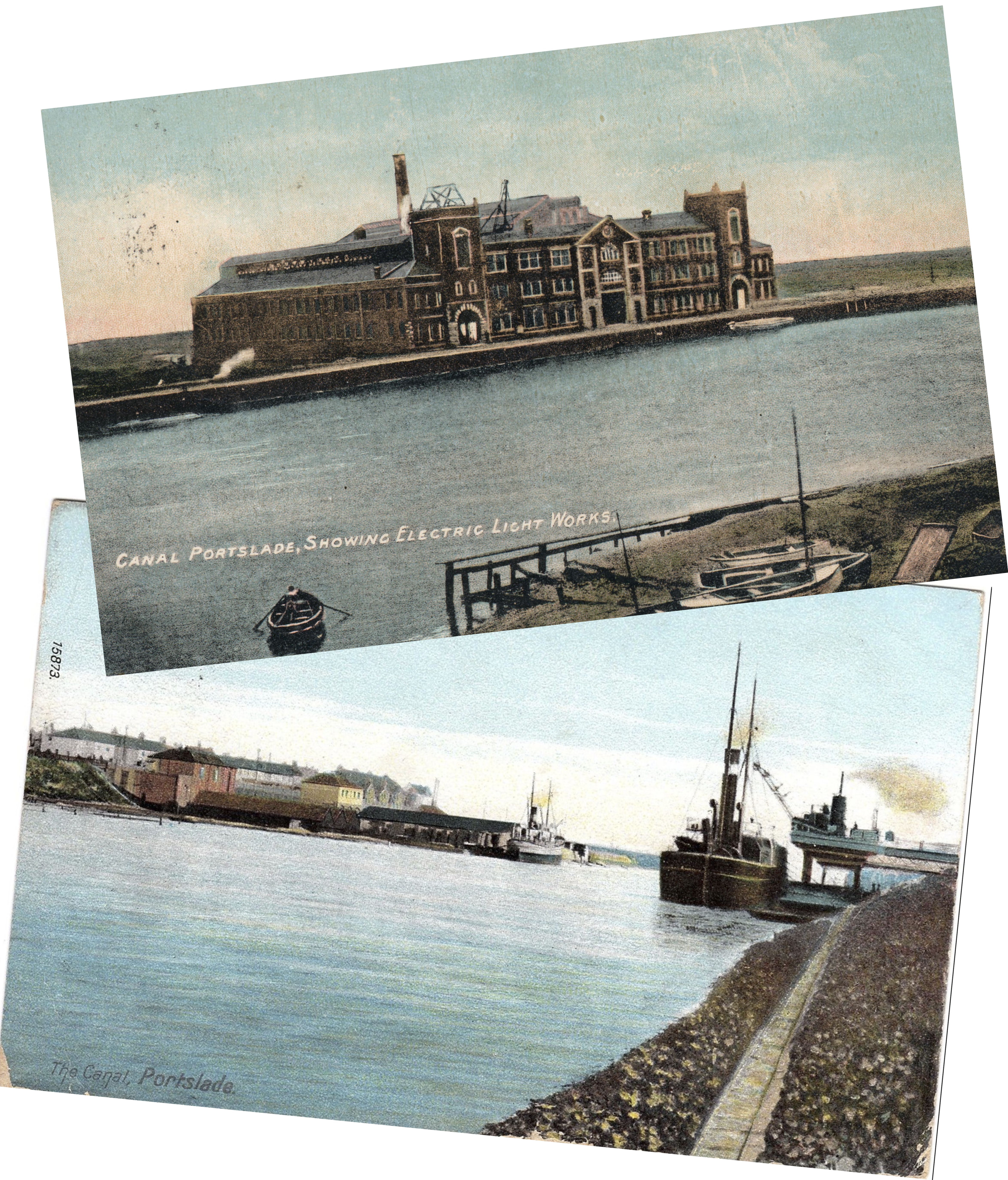
Voyages to and from either port took three days on average, the vessel making the trip about fifty times a year and allowing for the two days needed to unload its coal cargoes (one record shows it delivering 1400 tons on one trip) it would have been a well known sight at the power station dockside.
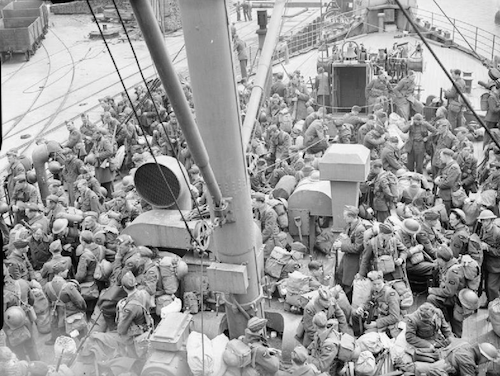
These journeys continued unabated despite the onset of war but there was a brief interruption on the 10th June 1940 when the vessel took on a mysterious cargo of ‘military stores.’ Then, on the 15th in company with the Fermain, Firecrest, Nephrite, Obsidian & Ravona from Newhaven the Arthur Wright was ordered to sail to Brest ‘with all despatch.’ This was ‘Operation Aeriel’ – the Dunkirk evacuation had ended but troops were still being rescued from various ports on the west coast of France. The Shoreham ship though is shown at Plymouth the next day, perhaps to unload its military stores, then again on the 18th. The evacuation from Brest was undertaken on 16th and 17th June so the Arthur Wright’s Plymouth dates either side fit in well with this. It would have been part of a large flotilla of ships including the troopships Arandora Star, Otranto, and Strathaird that collectively rescued 28,145 British and 4,439 Allied personnel, mostly RAF ground crew. Records show that Brest was bombed during the operation but the evacuation was largely carried out without any major interference by the Luftwaffe (at Brest if not elsewhere) and were landed at Plymouth.
The Arthur Wright returned to its ‘normal’ duties carrying coal to Shoreham, sometimes in convoy, sometimes alone. The voyages in convoy to and from Wales were what were to become known as the ‘South Coast Coal Convoy’ with other ships sometimes, but not always, protected by Royal Navy escorts. The voyages were fraught with danger, particularly the Land’s End to Isle of Wight leg as Sidney Davies, a crewman in the Arthur Wright described:- “On dark nights the German E-boats, very similar to our Motor Torpedo Boats, used to tie up to the swept channel (i.e., mine-free) marker buoys. Once a convoy was abeam of the waiting E-boats all hell broke loose. On those frightening occasions, at the first sign of trouble our escorts fired star shells, the targets became visible and battle commenced.”
At least three involved attacks from enemy aircraft, the first appears to have occurred in July 1940 during the return voyage in convoy from Swansea to Shoreham. The ship seems to have led a charmed life on this trip as crewman Alan Thompson described when two other ships either side of them were hit, five ships in total damaged and they even managed to avoid a later attack on the convoy that day by German MTB’s:-
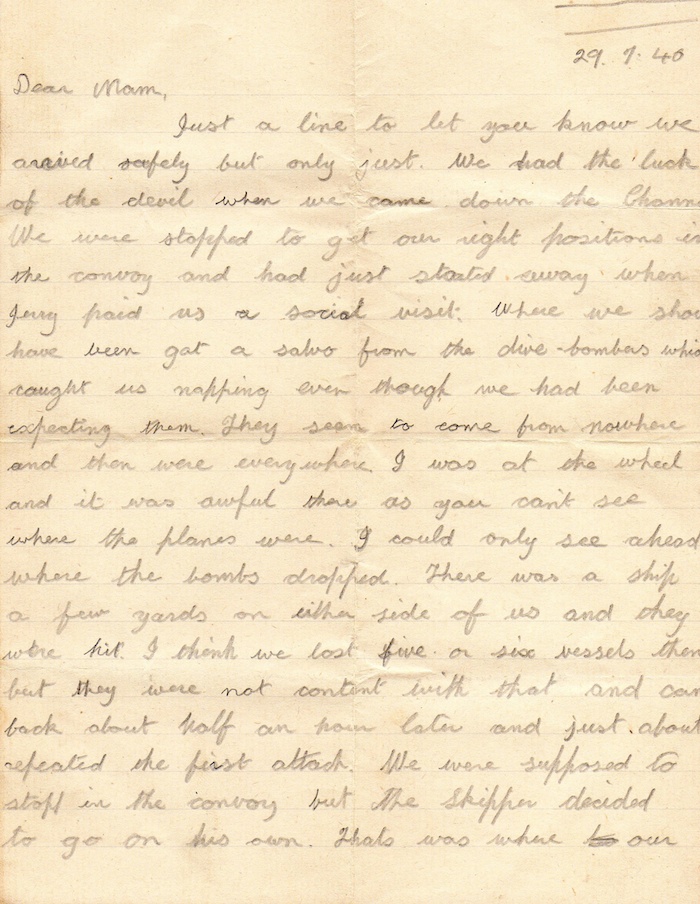
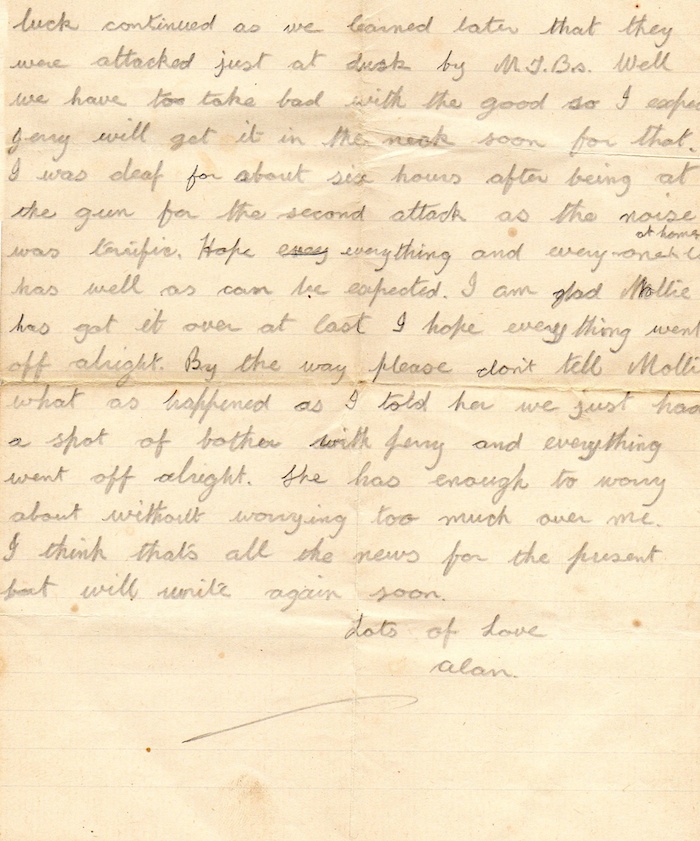
The second took place on the 8th March 1941 between the Lizard and Falmouth during one of the runs from Port Talbot but again the Arthur Wright escaped damage.
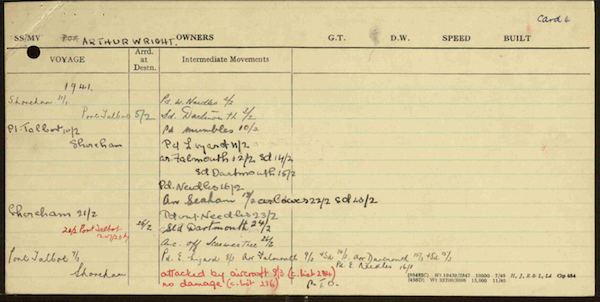
It was that same year though that the vessel’s most memorable episode took place and this first hand account of the action by Sidney Davies who had just rejoined the SS Arthur Wright:- “After a good laugh and a few beers in the Dock Hotel, Port Talbot we sailed for Shoreham. It was a lovely Saturday afternoon, lying off anchor waiting for a pilot to take us into harbour. The air raid siren, warning of an imminent attack, sounded across the water. Suddenly, three German aircraft came roaring past us at just above sea level. The D/S Ala, at anchor about a hundred yards away took a direct hit from a bomb and immediately blew up.
Our 12 pounder gun was manned by four merchant seamen and a Royal Navy Petty Officer gunner. We couldn’t miss one aircraft as it turned and headed straight towards us. It immediately crashed into the sea. A second plane was on us. We could clearly see the pilot in his leather flying helmet as a bomb left his plane. Time seemed to stand still, everything then appeared to happen in slow motion. The falling bomb narrowly missed as it plunged under our stern and exploded directly below our ship’s propeller, causing severe damage. We were towed into Portslade and paid off. The Arthur Wright spent the next two months in dry dock being repaired.”
The attack took place at 16.30 hours on the 17th May against the Arthur Wright, Ala and a third ship with them, the SS Botney. The Shoreham ship had been holed by cannon fire, internal fittings were destroyed and the gun was totally wrecked. The Norwegian ship D/S Ala did not sink and was beached just west of the harbour. Sadly the steward’s wife Rebecka Hansen had been killed by shrapnel and was buried in our municipal cemetery. After repairs the ship was taken in tow to Southampton. There were no anti magnetic wiping facilities at Shoreham and it appears that the bombing on May 17 had made the ship magnetic again as just off Bognor the Ala set off a mine and was sunk.
More on this attack was covered in a local newspaper and revealed that the first aircraft, a Messerschmitt 109, had been brought down by just one bullet by the Arthur Wright’s gunner, George Bright. The photo accompanying the article shows the ship coming into the harbour perhaps on another occasion after it had been repaired:-
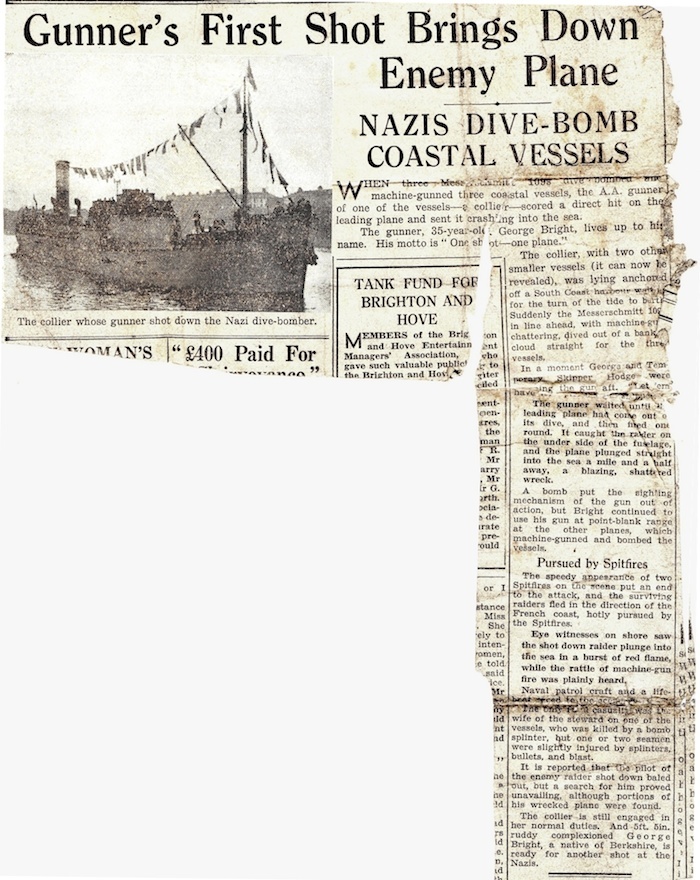
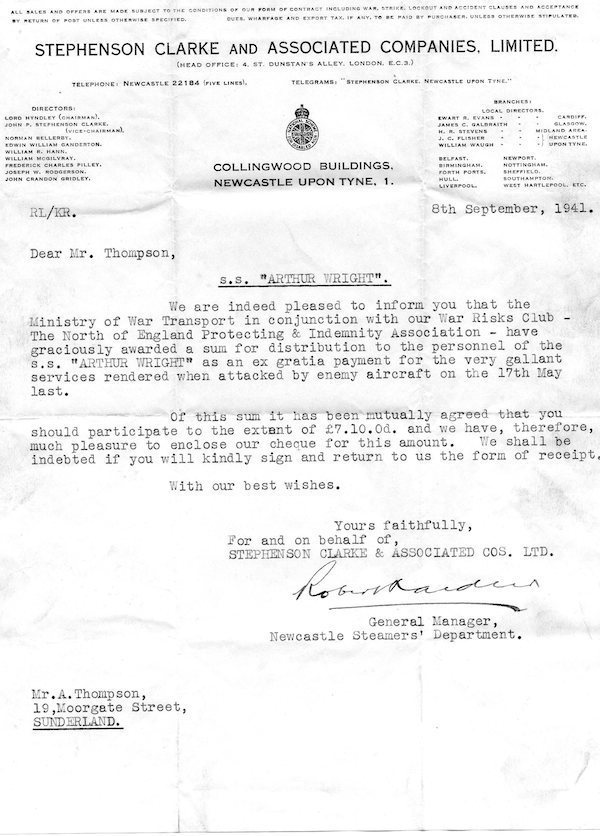
Thereafter the coal hauling convoys and unescorted voyages continued with no further recorded action involving enemy activity until June of 1944. Following the D-Day landings a massive operation to supply our invading troops began utilising all available merchant ships. This part of ‘Operation Overlord’ (the Battle for Normandy) was codenamed ‘Operation Neptune’ that began with the arrival of troops on the beaches followed by the supply ships. Coasters, of which the Arthur Wright was one of a total of 362 that were used, were ideally suited to maintain a constant supply of ammunition, fuel and general stores to the Normandy Beaches.
The convoys were marshalled through a ten-lane corridor that had been swept of mines known as ‘The Spout’ that ran from south of the Isle of Wight to Seine Bay – the bay in which the various Mulberry Harbour sections were constructed at each of the invasion beaches. There are some conflicting dates between the Arthur Wright’s movement cards and the records of the invasion beach convoys but for the Shoreham vessel most started at Southend and the Arthur Wright’s first journey to France was in mid June when only the return voyage is recorded from Seine Bay on the 16th June arriving at Southend on the 17th. There were to be five other Seine Bay convoys for the Arthur Wright from July to September although the Shoreham vessel may have left the convoy for some of them as it passed Shoreham. Most of these involved 20 to 30 merchant ships, initially with four escorts but these reduced to one by the end of the period as the main fighting moved further away into mainland France. The duration of stays for unloading whilst there was two days and one of the Arthur Wright’s return convoys consisted of 44 ships that included the damaged USS Kiowa being towed back for repair.
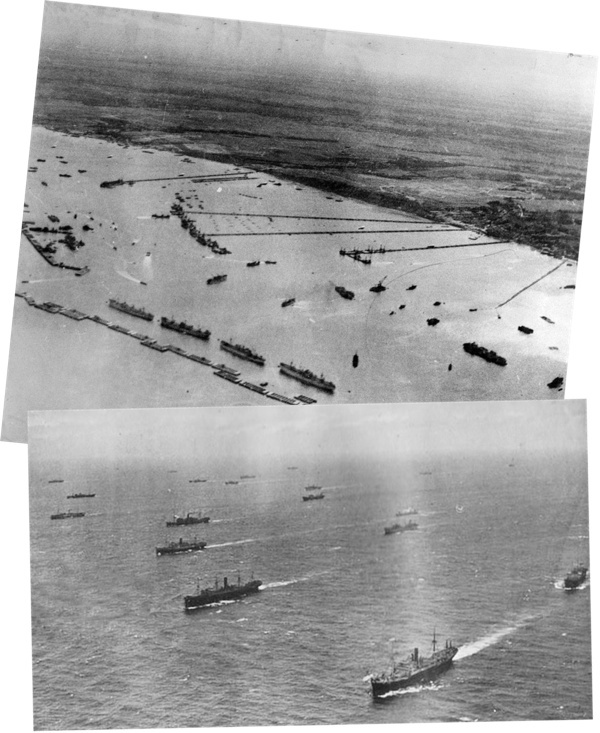
After the war ended the less eventful, routine peacetime voyages resumed although on May 24, 1953, one particularly memorable event took place when the vessel rescued 38 crew of the Andaman that had collided with the Fortune in thick fog and sank.
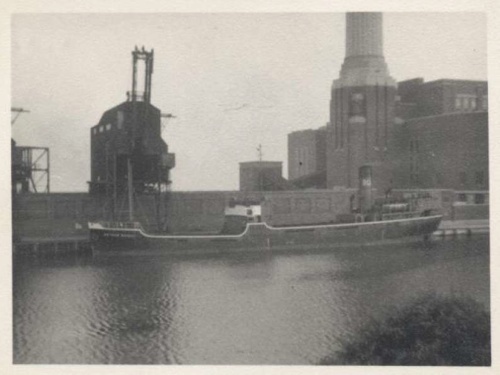
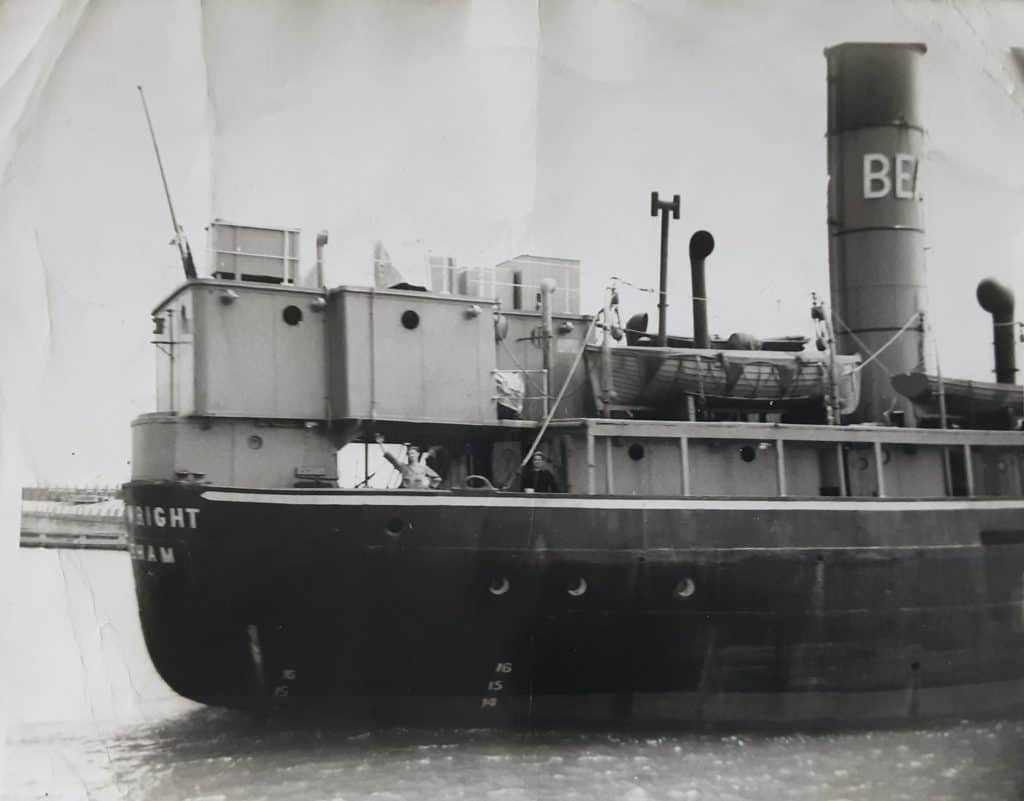
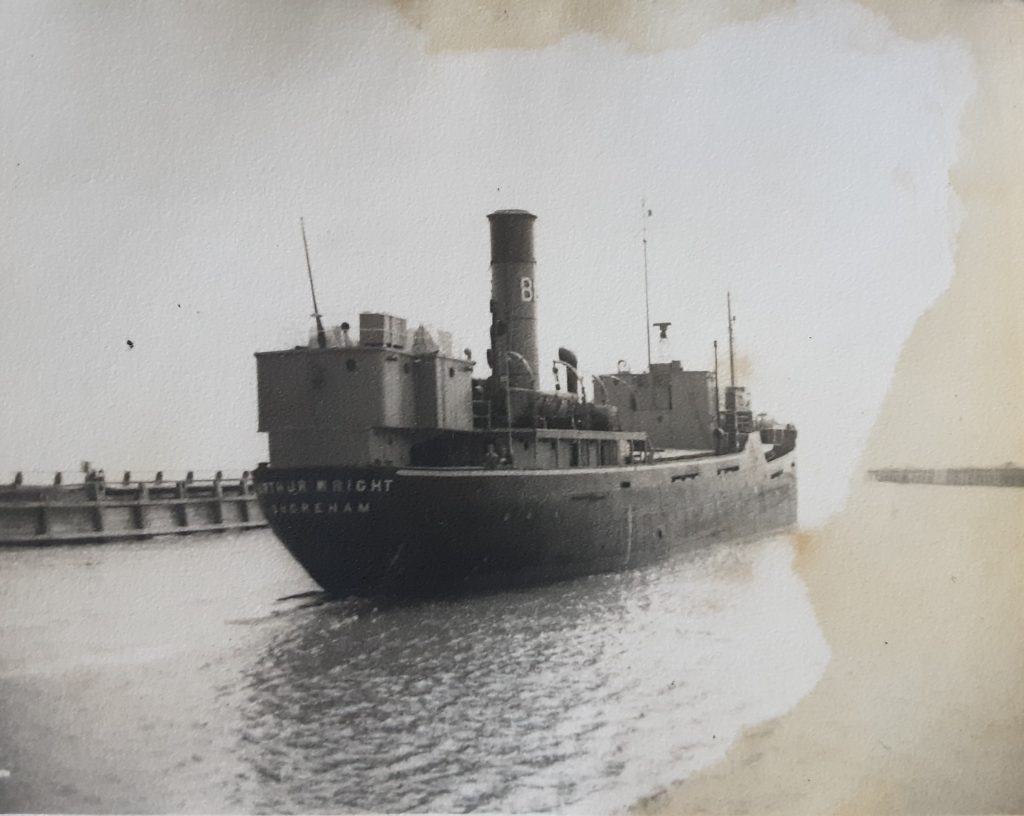
Eventually after 21 years service with Brighton Corporation the vessel was sold in 1958 to the Norwegian company Ivar Olsen of Oslo and renamed Ariston.
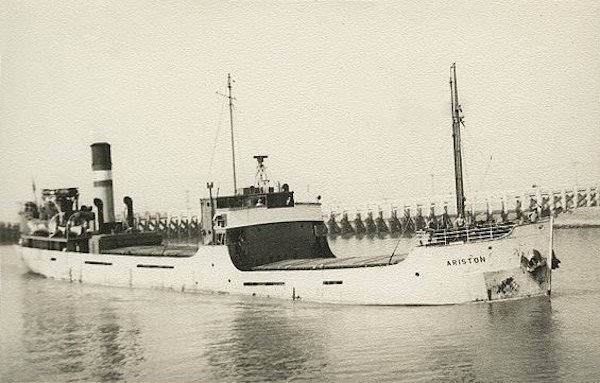
A few years later during one trip she became stuck in the ice for some weeks near the Island of Falster, Denmark. Whilst there fire broke out and the galley, engine room and the rest of the stern were completely destroyed. The cost of repairs, it seems, was not financially viable and in July of 1963 she was taken to nearby Masnedsund under tow and broken up. A sad but inevitable end for a vessel that followed in the proud tradition of its’ wooden predecessors from Shoreham that had made their mark in conflicts two hundred years before. *
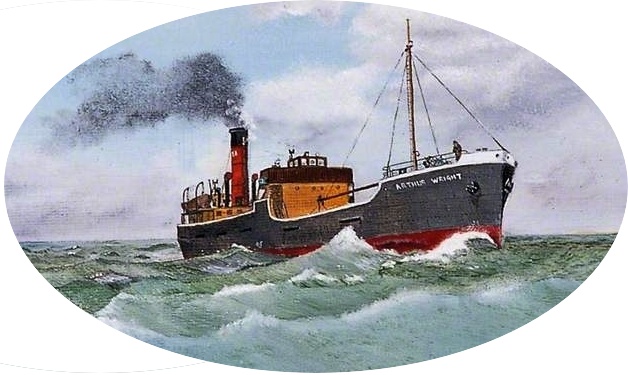
Roger Bateman
Shoreham
January 2015
* One of the more illustrious of these earlier ships, HMS Shoreham 1693 – 1744, and its’ service in Europe and the Caribbean is currently being researched
Acknowledgements:-
Particular thanks to:-
Nick Thompson for Alan Thompson’s letter, certificates of discharge, 1941 award letter, newspaper article and the Arthur Wright’s movement cards.
Doug Attrell and Gerry White for additional research.
References:-
Warsailors.com website (WW2 Norwegian merchant ships)
‘A View from the Merchant Navy 1941 – 1943’ by Sidney Davies from the book ‘Destroyer’ by Ian Hawkins, first hand accounts of WW2 sea action (although the date is incorrectly stated as January 1943).
http://www.naval-history.net/xDKWDa-Aerial.htm for information on ‘Operation Aerial’
The Sunderland site http://www.searlecanada.org for more information on the Arthur Wright.
Imperial War Museum for the image of RAF personnel being evacuated from Brest.
Action Officers Minute Book – West Sussex Record Office
National Army Museum for photos of Mulberry Harbour, Arromanche and Merchant Ships Convoy
http://www.convoyweb.org.uk for details of Operation Neptune convoys.
Shipspotting.com for photo of SS Arthur Wright alongside Shoreham B power station
Marlipins Museum for the Arthur Wright painting


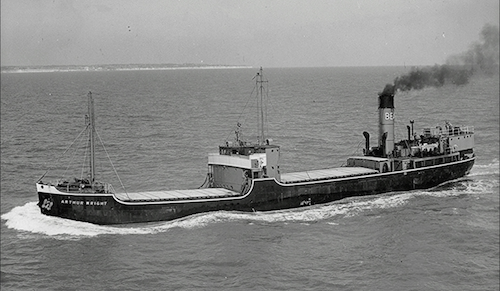
This is so very interesting, my father was on the Leisterbrook after WWII, probably around 1948. He had been in the RNVR during the war in the Atlantic arena and based in Lerwick,, Shetlands. He later went on to be Master of Errol Flynns Yacht Zaca.
Thank you for posting these amazing photos.
Glad you liked it Bonny. Looks like you could write an article on your Dad too or perhaps something on your Portslade past?
I have a couple of black and white photos of the Arthur Wright Shoreham, possibly in Shoreham Harbour, and no doubt taken by my late uncle Kenneth Lark who went on to have a career in merchant shipping (he was born in 1940 so I guess could even have been crew on her before her sale in 1958?)
Would you be interested in the photos? (or do you think I should contact the Marlipins Museum maybe?)
Thank you
So sorry to have missed you message until now Sandra. Yes, we would certainly like your photos thank you. We also hold most of Marlipins photos for them. Perhaps you could send the digital copies to me at [email protected] together with brief details such as is included in your message and we’ll add them to our records.
Thank you
OK Roger, thanks. They’re not digital copies – the only way I can digitise them is to photograph them (my scanner won’t do a very good job!) They are small images by the way! With a magnifier I can see two crew members on board, one waving, but they are unfamiliar to me, but someone may recognise them!
Hello Sandra, do you still have the images you said are of the Arthur Wright? My dad, Alan Thompson, was aboard the ship during the attack on 17th May 1940 manning the machine gun. I am collating his experiences in preparation of a book on his life and I am always looking for items of interest regarding the Arthur Wright. He could very well be one of the people you say are waving. I look forward to hearing from you. Nick Thompson
I’m so sorry I hadn’t seen your message til now! I saw the pictures in the folder on my tablet while I was doing some other photos and thought I must send those off. Luckily this page was still ‘open’ in chrome! So yes, I still have them.
PS. I’m emailing digital copies to Roger now, and can let you have the originals if wanted? (I’m in Southwick)
PS. I’m emailing digital copies to Roger now, and can let you have the originals if wanted? (I’m in Southwick)
Digitals safely received thanks Sandra and will be added to the article.